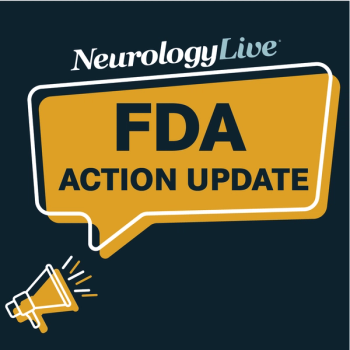
Anti-Alpha-Synuclein Antibody Prasinezumab Enters Phase 3 Development
Key Takeaways
- Prasinezumab targets aggregated alpha-synuclein, aiming to modify Parkinson's disease progression rather than just alleviate symptoms.
- Phase 2b PADOVA study showed prasinezumab's impact on motor progression, despite missing its primary endpoint, with notable effects in levodopa-treated patients.
Roche advances prasinezumab into phase 3 trials for Parkinson disease, aiming to explore its potential as a disease-modifying treatment.
According to a new announcement, Roche is planning to advance its investigational anti-alpha-synuclein antibody prasinezumab into phase 3 trials of Parkinson disease (PD), further testing the agent’s therapeutic potential as a PD treatment. The company has not relayed any information yet on the design or build of such study, with more expected to come over the coming months.1
Prasinezumab is designed to bind aggregated alpha-synuclein, a neuronal protein that, under pathological conditions, misfolds and aggregates into insoluble fibrils, forming Lewy bodies–a hallmark of PD. These aggregates are believed to be neurotoxic, disrupting cellular processes, spreading between neurons, and contributing to progressive neuronal degeneration, particularly in dopaminergic pathways. Preventing aggregated alpha-synuclein is considered a disease-modifying approach, contrasting to typical symptomatic treatments.
The therapeutic efficacy of the agent was most prominently displayed in the phase 2b PADOVA study (NCT004777331), a large-scale trial of 586 patients with early-stage PD lasting 18 months total. Data from that study, along with its open-label extension (OLE), demonstrated prasinezumab’s sustained impacts on motor progression, as well as provided the first biomarker evidence of prasinezumab impacting the underlying disease biology.
"We are encouraged by the efficacy signals observed across the two phase II trials and their open-label extensions, combined with the favorable safety and tolerability profile of prasinezumab," Levi Garraway, MD, PhD, chief medical officer and head of Global Product Development at Roche, said in a statement.1 "We also recognize the substantial need for new treatment options, and the totality of data suggest that prasinezumab may have the potential to become the first disease-modifying treatment for people with Parkinson disease."
PADOVA, which included patients aged 50-85 years old with Hoehn and Yahr stage 1 or 2, showed that prasinezumab had an impact on several notable secondary end points. These included time to worsening of motor functioning, time to meaningful worsening on Clinical Global Impression of Change scales, change in MDS-Unified Parkinson’s Disease Rating Scale (MDS-UPDRS) Part III, and change in Digital Health Tool-derived measures. In the OLE, trends towards reduced motor progression at 104 weeks were observed, showing 30-40% relative reduction vs placebo across the overall and levodopa-treated participants.
READ MORE:
Data from another phase 2 study, PASADENA (NCT03100149), also helped advance prasinezumab into phase 3 development. In this study, patients with early-stage PD were randomly assigned 1:1:1 to receive intravenous prasinezumab every 4 weeks for 2 years (early-start group; n = 204) or placebo for 1 year, followed by low- or high-dose prasinezumab for 1 year (delayed-start; n = 105). Following the completion of the study, investigators published an exploratory analysis in Nature which compared participants enrolled in the OLE with those enrolled in an external comparator arm derived from the Parkinson’s Progression Markers Initiative (PPMI) observational study.
In the published findings, results showed that both groups on prasinezumab demonstrated a slower decline in MDS-UPDRS Part III scores in the OFF state (delayed-start: –51%; early start: –65%), ON state (delayed-start: –94%; early-start: –118%), and MDS-UPDRS Part II (delayed-start: –48%; early-start: –40%) than the PPMI external comparator (n = 303). After four years, the PASADENA early- and delayed-start groups showed less progression in MDS-UPDRS Part I scores (6.28 and 6.39 points) compared to 8.34 points in the PPMI cohort. Notably, prasinezumab-treated patients also had significantly lower sleep-related progression (items 7 and 8), with a 47% relative reduction in the delayed-start group and a 61% reduction in the early-start group.3
REFERENCES
1. Roche to advance prasinezumab into Phase III development for early-stage Parkinson's disease. News release. Roche. June 16, 2025. Accessed June 16, 2025. https://www.globenewswire.com/news-release/2025/06/16/3099541/0/en/Roche-to-advance-prasinezumab-into-Phase-III-development-for-early-stage-Parkinson-s-disease.html
2. Roche’s Phase IIb study of prasinezumab missed primary endpoint, but suggests possible benefit in early-stage Parkinson’s disease. News release. Roche. December 19, 2024. Accessed June 16, 2025. https://www.globenewswire.com/news-release/2024/12/19/2999515/0/en/Roche-s-Phase-IIb-study-of-prasinezumab-missed-primary-endpoint-but-suggests-possible-benefit-in-early-stage-Parkinson-s-disease.html
3. Pagano G, Monnet A, Reyes A, et al. Sustained effect of prasinezumab on Parkinson’s disease motor progression in the open-label extension of the PASADENA trial. Nature. 2024;30:3669-3675. doi:10.1038/s41591-024-03270-6
Newsletter
Keep your finger on the pulse of neurology—subscribe to NeurologyLive for expert interviews, new data, and breakthrough treatment updates.



































